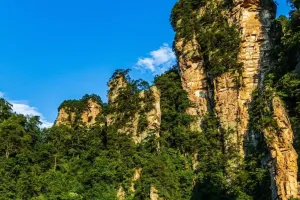Bridge photography has gained popularity in recent times, with many bridges not only serving transportation needs but also standing as architectural marvels worthy of admiration and photographic exploration.
As bridges evolve in design, incorporating unique shapes and features, they have become magnets for citizens keen on capturing their beauty through photography.
Capturing compelling images amidst common scenes demands skill and technique. For bridge photography, mastering composition is paramount, with the choice of shooting angle laying the groundwork for successful shots. So if you want to take a beautiful photo, you still need some skills and routines.
In architectural photography, composition is the leader, and an excellent shooting position has laid the foundation for a successful composition. So let's first take a look at the three angles in bridge photography and the corresponding composition methods, and how these methods determine the shape of the bridge.
1. Depression Angle Shooting
Take a high vantage point and a condescending angle to shoot so that you can capture the entire bridge and the scenery on both sides of it. Additionally, employing a zoom lens during shooting offers flexibility in selecting focal lengths, enabling the inclusion of both the bridge and its picturesque surroundings.
2. Side Shot
Shooting the bridge from the side is also an angle we often use, but it can be difficult to take good pictures in this position. When we meet a long bridge, utilizing a wide-angle lens and getting closer to the structure can get a perfect picturesque, accentuating the modern steel bridge's tension and impact through distortion effects.
3. Overhead Shot
Some bridges are perfect for climbing or photographing with a drone. The bridge body is connected with the road, which forms a very beautiful geometric line. If it is shot at night, the vibrant colors of the night scene will also fascinate the viewer, and it is a very good recording angle for modern bridges.
4. Utilizing Bridge Body Guidelines
The body of the bridge runs through the whole picture due to its special structure. We can take advantage of this to effectively guide the audience's attention. The most intuitive shooting method is to directly use the perspective relationship, from near to far, to lead the audience's gaze towards distant horizons.
5. Harnessing Light
In addition to composition, we also face another challenge when shooting bridges: light. Strategic timing allows photographers to capitalize on unique lighting environments, enhancing the visual impact of various bridge compositions.
Shooting from the front, the picture has a sense of symmetry, which is especially suitable for the magnificent bridge. However, due to the architectural characteristics of the bridge, it is difficult to find a location for frontal shooting. Head-up side shooting, outlining the side profile of the bridge, can also give people a strong sense of three-dimensionality.
6. Symmetry
Bridges, often situated above water bodies, offer opportunities for symmetrical compositions accentuated by reflections on the water's surface. The interplay between calm waters and the bridge's reflection adds depth and geometric beauty, especially with classical arch bridges.
Bridge photography transcends mere documentation, offering a canvas for artistic expression and storytelling. Through adept composition, skillful use of angles, and appreciation of light dynamics, photographers transform ordinary scenes into extraordinary visual narratives, celebrating the architectural grandeur and timeless beauty of bridges.


